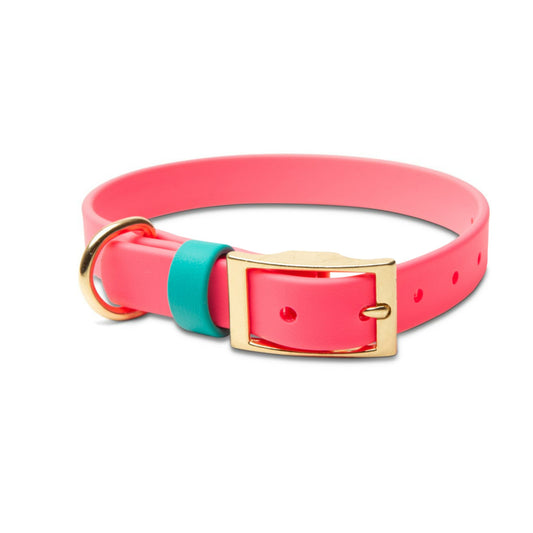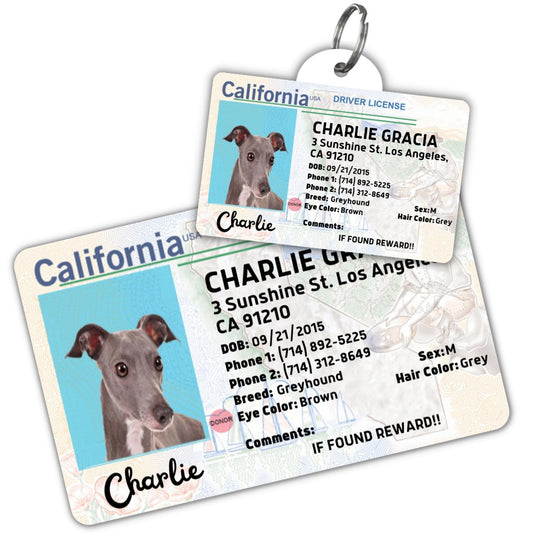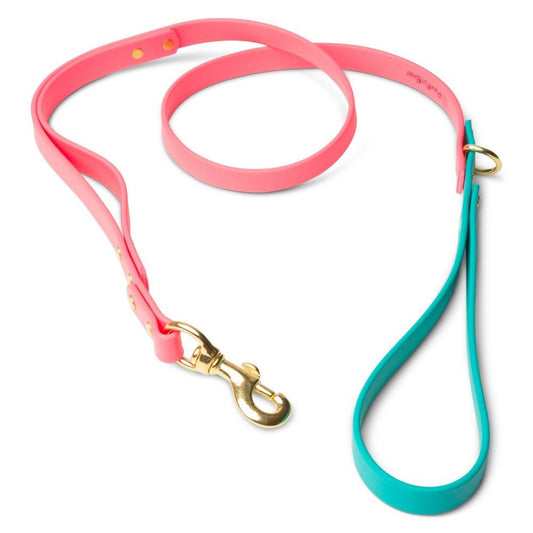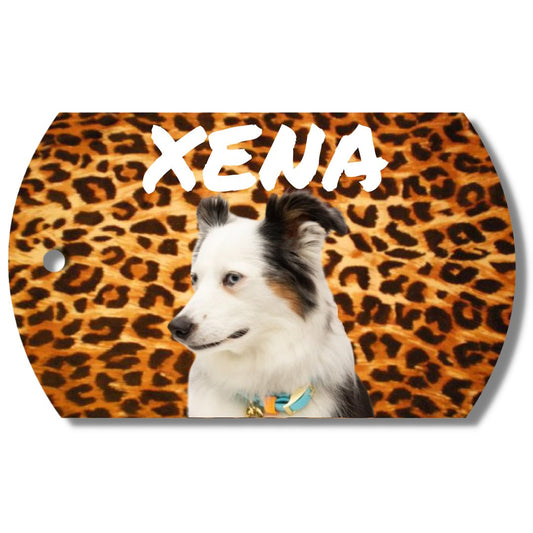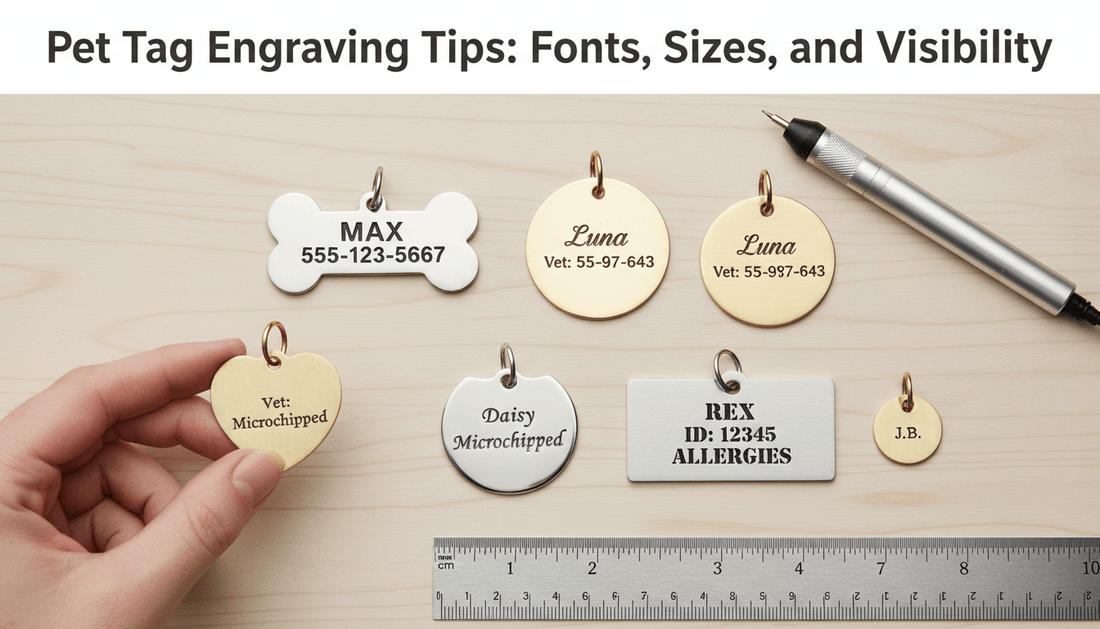
Pet Tag Engraving Tips: Fonts, Sizes, and Visibility
When your beloved dog goes missing, every second counts. That small metal tag dangling from their collar might be the only thing standing between a terrifying ordeal and a quick, happy reunion. Yet many pet owners don't realize that not all engraved dog ID tags are created equal. The difference between an effective identification tag and a useless piece of metal often comes down to three critical factors: font selection, sizing decisions, and overall visibility.
Creating quality engraved dog tags requires more than simply etching your phone number onto metal. It demands careful consideration of readability, durability, and practicality. Whether you're ordering your first custom pet tags dog collar accessory or replacing a worn-out tag, understanding these engraving fundamentals ensures your pet has the best possible chance of returning home safely.
Why Font Selection Matters More Than You Think
The font you choose for your engraved dog ID tags directly impacts how quickly someone can read your contact information. In a stressful situation where a stranger has found your lost dog, you want that person to immediately understand what they're looking at without squinting, tilting the tag toward the light, or struggling to decipher decorative lettering.
The Readability Factor
Sans-serif fonts—those without the small decorative strokes at the ends of letters—consistently outperform decorative or script fonts in legibility testing. Fonts like Arial, Helvetica, and similar simple typefaces translate beautifully onto metal because each letter stands distinct and clear. The clean lines engrave crisply, and the letters maintain their clarity even as the tag experiences normal wear and tear.
Script fonts and decorative typefaces might seem charming at first glance, especially when you're imagining a pretty tag for your princess poodle or distinguished gentleman boxer. However, these ornate fonts become problematic when engraved onto small metal surfaces. The flowing connections between letters can blur together, making individual characters difficult to distinguish. Serif fonts, while more readable than script, still add unnecessary complexity to letters that could be simpler and clearer.
Font Weight and Thickness
Beyond the font family itself, consider the weight of the letters. Bold or semi-bold fonts engrave more successfully than thin, delicate options. Thicker letters create deeper, more substantial engravings that resist fading over time. When choosing custom pet tags, dog owners should prioritize, opt for fonts with moderate to heavy weight. These create clear, defined engravings that remain legible even after months or years of daily wear.
Thin fonts might look elegant in a design mockup, but they translate poorly to actual engraved metal. The engraving depth can only go so deep before compromising the structural integrity of the tag. Thin lines create shallow engravings that wear away quickly, especially on dogs who love water, enjoy rolling in dirt, or spend significant time outdoors where their tags scrape against various surfaces.
Understanding Font Sizes for Maximum Impact
Size matters tremendously when it comes to engraved dog ID tags. You're working with limited real estate—typically a small circle, hexagon, or diamond-shaped piece of metal—and you need to fit crucial information without creating a cluttered, unreadable mess.
Balancing Information and Legibility
The most common mistake pet owners make is trying to include too much information in too small a space. They want the dog's name, their own name, two phone numbers, a street address, an email address, a medical condition note, and perhaps a cute quote—all on a tag the size of a quarter. The result? Text so tiny that it's practically illegible, defeating the entire purpose of the identification tag.
Quality engraved dog tags prioritize essential information in readable sizes over comprehensive information in microscopic print. Ask yourself: what does someone absolutely need to return my dog? The answer is usually simple: your phone number. Everything else is secondary.
A good rule of thumb is ensuring your phone number uses the largest practical font size. If you're including your dog's name, it can match or be slightly larger than the phone number, as names are typically shorter and easier to accommodate. Secondary information like a backup phone number or a brief medical note should be smaller but still comfortably readable.
Testing Visibility Before Committing
Before finalizing your engraved dog ID tags order, consider the actual viewing conditions. Someone finding your dog will likely be standing, with your dog at ground level, trying to read the tag as your dog moves around. They might be in bright sunlight, in dim evening light, or in varied outdoor conditions. The font size needs to accommodate these real-world scenarios.
A helpful test: when viewing your tag design on screen, step back about three feet from your monitor. Can you still read the information clearly? If you're squinting or struggling, the font size is too small. Remember that a physical engraved tag will often be even smaller than it appears on screen, so build in a margin for error.
The Critical Importance of Deep Engraving
The depth of engraving dramatically affects the longevity and visibility of your custom pet tags dog identification. Shallow engraving might look acceptable when the tag is brand new, but it fades rapidly with normal wear. Deep engraving, by contrast, creates lasting visibility that endures through years of active dog life.
What Defines Deep Engraving
Deep engraving means the text is cut into the metal at a depth that creates shadow and dimension. When you run your finger across quality engraved dog tags, you should feel distinct grooves where the letters are etched. This tactile difference indicates engraving deep enough to last.
Laser engraving technology has revolutionized the dog tag industry, allowing for precise, deep cuts that maintain incredible detail while creating lasting impressions. PawFurEver utilizes advanced engraving techniques that ensure text remains visible and legible far longer than surface-level etching or printing methods.
How Deep Engraving Improves Visibility
Deep engraving doesn't just resist wear—it actually enhances visibility through light and shadow interaction. When light hits a deeply engraved surface, it creates contrast between the recessed letters and the surrounding metal. This natural shadow effect makes text stand out dramatically, improving readability in various lighting conditions.
Shallow engraving lacks this dimensional quality. The letters sit nearly flush with the metal surface, reducing contrast and making them harder to read, especially as the tag accumulates scratches and patina from daily wear. After a few months of outdoor adventures, shallowly engraved text can become nearly invisible, while deeply engraved information remains crisp and clear.
Maximizing Visibility Through Design Choices
Beyond fonts and sizing, several design decisions impact how visible and effective your engraved dog ID tags will be in real-world situations.
Metal Color and Contrast
The finish you choose for your custom pet tags dog collar accessory affects readability more than you might expect. PawFurEver offers engraved dog ID tags in three beautiful finishes: gold, silver, and rose gold. Each creates different contrast levels with the engraved text.
Silver tags provide excellent contrast because the engraving reveals darker metal beneath the surface finish, creating clear definition between text and background. Gold tags offer warm, rich aesthetics while maintaining good readability, as the engraving creates subtle but visible shadows. Rose gold strikes a balance between elegance and practicality, offering contemporary style without sacrificing function.
Consider your dog's collar color when selecting your tag finish. A silver tag on a black collar creates striking contrast that makes the tag easy to spot. Gold tags shine beautifully against darker leathers and fabrics. Rose gold offers a softer, more subtle look that still catches the eye without overwhelming the overall aesthetic.
Shape Considerations for Readability
Tag shape influences how much usable space you have for engraving and how the tag hangs and moves on your dog's collar. PawFurEver offers three distinct shapes—circle, hexagon, and diamond—each with unique advantages.
Circular tags provide the most traditional look and offer consistent space distribution. The lack of corners means less risk of the tag catching on objects or poking your dog. The rounded shape also tends to lay flat against your dog's chest, keeping the engraved information facing forward and visible.
Hexagon tags offer a modern, geometric aesthetic with slightly more surface area than comparable-sized circles. The flat edges at top and bottom create natural zones for separating information—perhaps your dog's name at the top and your phone number at the bottom—improving organization and readability.
Diamond-shaped tags make a distinctive style statement and provide interesting visual dynamics. The pointed orientation creates a natural focal point at the widest section, ideal for your most important information—typically your phone number.
Information Hierarchy: What to Include and What to Skip
Creating effective engraved dog ID tags means making strategic decisions about what information deserves precious tag space.
Essential Information First
Your phone number is non-negotiable. This single piece of information enables immediate contact and should receive priority placement and sizing. Many experts recommend including only your phone number, as this provides everything necessary for a quick reunion.
Your dog's name comes next in importance. Knowing your pet's name helps the finder establish rapport and calm your nervous dog. However, some trainers suggest omitting your dog's name for security reasons; if a stranger can call your dog by name, your pet might be more likely to go with them willingly. Consider your dog's temperament and training when making this decision.
Secondary Information to Consider
A backup phone number provides redundancy if you're unreachable, especially useful if you have a spouse or family member who's often available. However, this doubles your text requirements, so ensure your primary number is still prominently featured.
Medical information becomes critical if your dog has conditions requiring immediate attention. "DEAF," "NEEDS MEDICATION," or "DIABETIC" are short, crucial notes that could save your dog's life. Keep these messages brief—full sentences aren't necessary when urgent keywords suffice.
Some owners include street addresses, but these take up significant space and aren't strictly necessary. A phone call provides faster, more direct contact than someone physically bringing your dog to an address. Save the space for more readable phone numbers instead.
What to Avoid
Cute quotes and lengthy messages, while tempting, sacrifice readability for sentiment. "Not all who wander are lost" might express your dog's adventurous spirit, but it consumes space better used for contact information. If you absolutely must include a message, keep it extremely brief—three to four words maximum.
Email addresses are impractical. Few people who find a lost dog will take time to compose an email when a phone call provides immediate connection. The length of email addresses also forces tiny font sizes that defeat readability.
Customization Without Sacrificing Function

Quality engraved dog tags can be both beautiful and practical. PawFurEver's customization options allow personal expression without compromising the tag's primary purpose—getting your dog home safely.
Adding Graphics and Symbols
Small graphics like paw prints, hearts, or stars can personalize your tag while maintaining readability—if used judiciously. Place decorative elements in corners or edges where they don't interfere with critical text. A small paw print nestled beside your dog's name adds charm without sacrificing space needed for your phone number.
However, resist the temptation to fill every available space. Negative space—empty areas on the tag—actually improves readability by preventing visual clutter. A clean, uncluttered design with ample spacing around text creates a more effective identification tag than a densely packed, heavily decorated option.
Color Coding for Multiple Pets
If you have multiple dogs, consider using different metal finishes to quickly identify each pet's specific tag. Your golden retriever might wear a gold tag, your Husky a silver one, and your terrier a rose gold option. This system helps you quickly grab the right tag when updating information or ensures each pet receives their correct tag after cleaning.
The PawFurEver Advantage
When investing in custom pet tags dog identification, partnering with a company that understands both safety and style makes all the difference. PawFurEver's collection of engraved dog ID tags combines premium materials, deep engraving techniques, and thoughtful design options that prioritize your pet's safety without sacrificing aesthetic appeal.
Their stainless steel tags, available in circle, hexagon, and diamond shapes with gold, silver, or rose gold finishes, provide durable, beautiful identification that withstands years of active dog life. The deep engraving ensures information remains visible and legible long after purchase, while the included split rings keep tags securely attached through all of life's adventures.
At an accessible price point, these quality engraved dog tags deliver premium feel and functionality without breaking the bank. You're not just buying a pretty accessory—you're investing in your dog's safety and your own peace of mind.
Conclusion: Making Every Detail Count
Your dog's identification tag is too important to leave to chance. By carefully considering font selection, sizing decisions, engraving depth, and overall visibility, you create custom pet tags dog owners can truly rely on when it matters most. Remember that this small piece of metal might be the only thing connecting a lost, scared dog with their frantic owner.
Prioritize readability over decoration, choose deep engraving over surface etching, and select durable materials over cheaper alternatives. Include essential information in legible sizes rather than cramming every possible detail into microscopic text. These decisions transform a simple dog tag from a forgettable accessory into a crucial safety tool.
With quality engraved dog tags from PawFurEver featuring carefully chosen fonts, appropriate sizing, and maximum visibility, you give your dog the best possible chance of a safe, quick return home. Because when your four-legged family member goes missing, nothing matters more than bringing them back where they belong.
Frequently Asked Questions
1. What font size is best for engraved dog ID tags?
Your phone number should be the largest text, typically 12-16 point depending on tag size. Your dog's name can match or be slightly larger. Avoid anything smaller than 8-10 point, as it becomes difficult to read, especially in poor lighting conditions.
2. How deep should quality engraved dog tags be engraved?
Quality engraving should be deep enough to feel distinct grooves when running your finger across the text. Laser-engraved tags typically achieve 0.1-0.3mm depth, which resists fading and maintains visibility for years through normal wear and tear.
3. What's the minimum information needed on custom pet tags dog owners should include?
At minimum, include your current phone number. This single piece of information is all someone needs to contact you immediately. Adding your dog's name is helpful for calming them, but the phone number is absolutely essential.
4. Do certain metal finishes make engraved dog ID tags more visible?
Silver finishes typically provide the highest contrast between engraved text and metal surface. However, all three finishes (gold, silver, rose gold) offer good visibility when deeply engraved. Choose based on your preference and collar color for best aesthetic coordination.
5. How often should I replace my dog's engraved ID tag?
Inspect tags monthly for wear. Quality engraved dog tags made from stainless steel typically last 2-5 years, depending on your dog's activity level. Replace immediately if the engraving becomes difficult to read, the tag shows significant damage, or your contact information changes.


